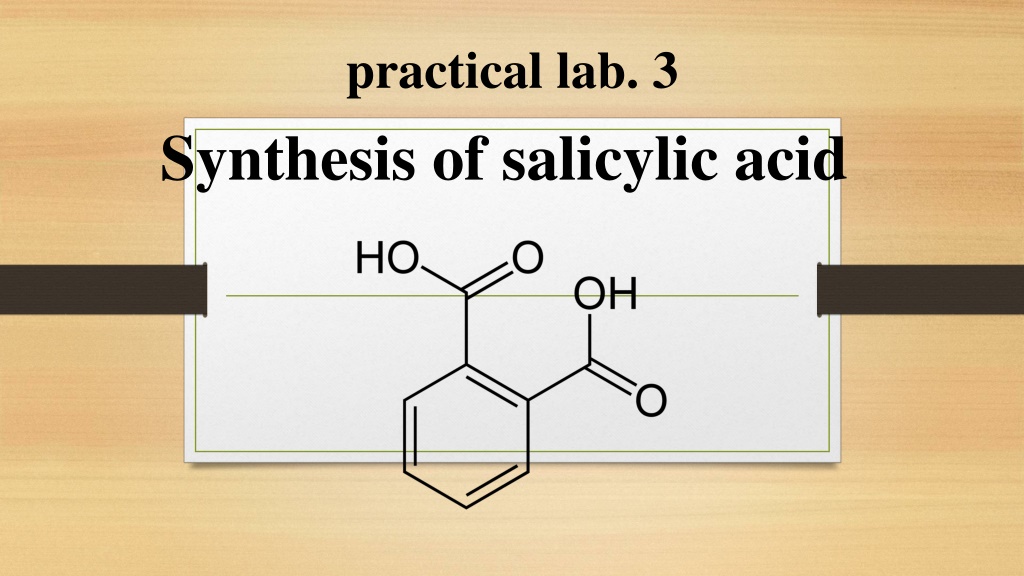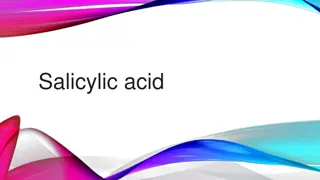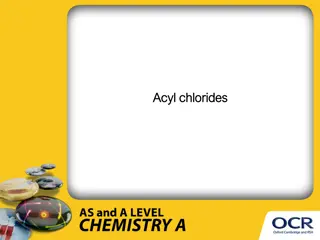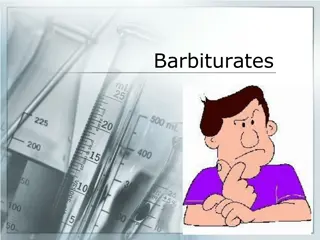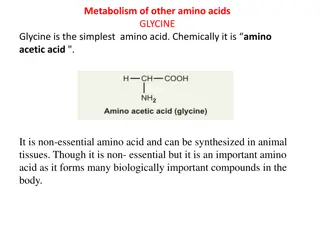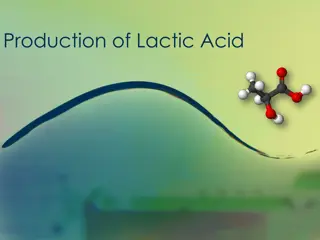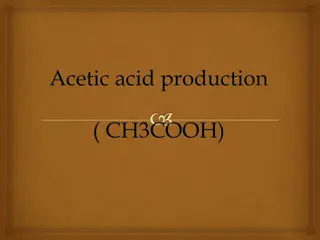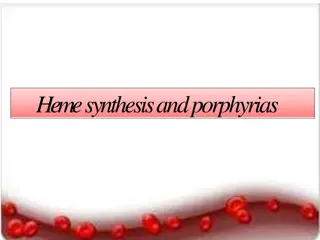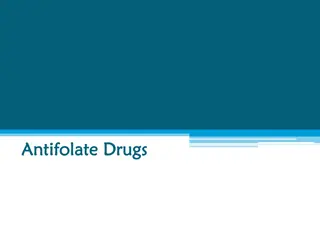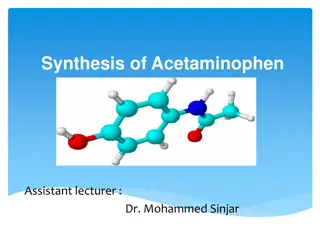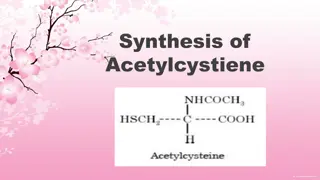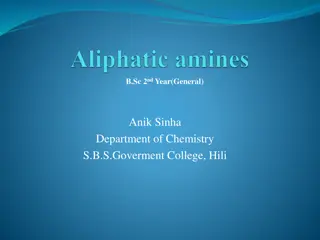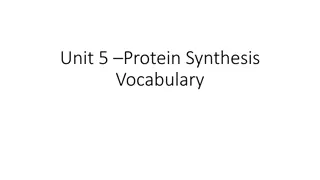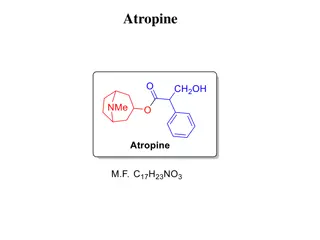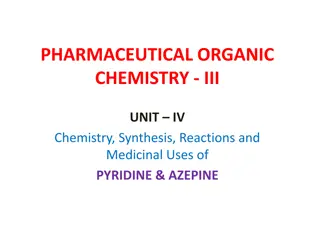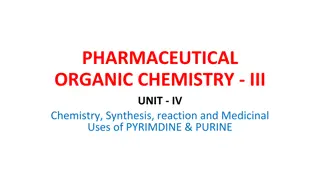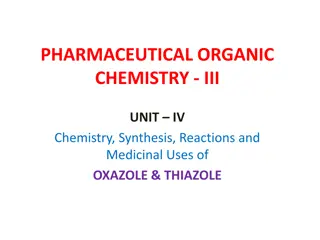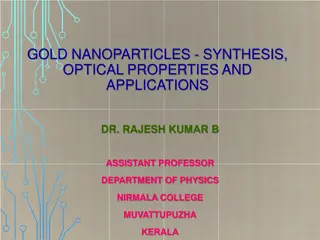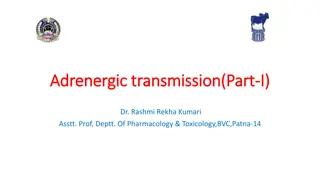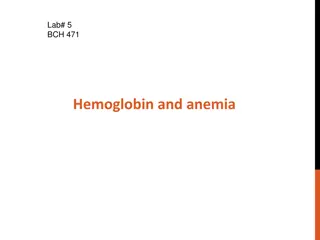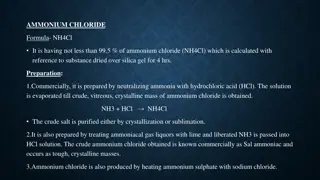Synthesis of Salicylic Acid: Theory, Derivatives, and Applications
Salicylic acid is synthesized from methyl salicylate through ester hydrolysis with aqueous alkali. It is a versatile compound used in organic synthesis, as a plant hormone, and derived from salicin metabolism. The derivatives of salicylic acid can minimize gastric disturbances and enhance therapeutic effects. Examples of derivatives include ammonium salicylate, methyl salicylate, and acetyl salicylic acid. Salicylic acid exhibits antiseptic properties and is used in preserving foods, treating warts, and as an analgesic. Acetyl salicylic acid, commonly known as aspirin, is a preferred alternative due to its milder side effects. Differences between salicylic acid and aspirin are highlighted, such as their reactions with ferric chloride.
Download Presentation

Please find below an Image/Link to download the presentation.
The content on the website is provided AS IS for your information and personal use only. It may not be sold, licensed, or shared on other websites without obtaining consent from the author. Download presentation by click this link. If you encounter any issues during the download, it is possible that the publisher has removed the file from their server.
E N D
Presentation Transcript
practical lab. 3 Synthesis of salicylic acid
Theory: salicylic acid is prepared from methyl salicylate by hydrolysis of ester group with aqueous alkali (NaOH or KOH). Salicylic acid is a monohydroxybenzoic acid, a type of phenolic acid and a beta hydroxy acid. This colorless crystalline organic acid is widely used in organic synthesis and functions as a plant hormone. It is derived from the metabolism of salicin.
-There are two types of derivatives of SA depends upon the attack on which group takes place a. Esters of carboxylic acid. b. Substitution of phenolic groups. -Most of these derivatives are introduced to minimize the gastric disturbances, hemorrhage irritation and undesirable taste. -The advantage of these derivatives is to increase the effects and decrease side effects.
Examples: 1. Ammonium salicylate. 2. Sod. Salicylate . 3. Methyl salicylate. 4.Ethyl salicylate . 5. Strontium salicylate (sod. Salicylate+bismuth nitrate) . 6.Salicylamide. 7. Salysal (ester linkage between two molecules of SA sal-ester-sal) 8.Acetyl salicylic acid.
Salicylic acid has strong antiseptic and germicidal properties ; therefore, it's used as preservative material for foods and pharmaceuticals. In addition, it has good treatment of warts , corns and athlete's feet. Internally , although it shows antipyretic and analgesic activities, its salts and derivatives are used for these purposes.
Salicylic acid and acetyl salicylic acid: Salicylic acid was a good analgesic and antipyretic, but it has an unwanted teste and an irritating effect on the stomach, people could not tolerate taking SA. SA was treated with acetic anhydride in the presence of H2SO4 to give acetyl salicylic acid (ASA), this compound is known as aspirin tested as better and much less acidic than SA; so that the patient could tolerate taking aspirin by mouth.
Differences between SA and ASA: 1. SA gives +ve result with ferric chloride FeCl3 because it contains free OH gp., while ASA give ve result because (OH) gp. Of SA is acetylated to give ASA.
2. SA can not be used internally because it causes stomach irritation while ASA is less irritating. 3. Melting point of SA differs from that of ASA. 4. Salicylate anion is stabilized by intramolecular H bonding; therefore, SA is more slightly soluble in water than ASA (SA<ASA).
Preparation of salicylic acid: Lab. Method ( alkaline hydrolysis of ester ): SA is prepared from methyl salicylate by hydrolysis of ester group with aqueous alkali (NaOH or KOH)
The mechanism : 1. Nucleophilic addition of OH- ion to the carbonyl gp: 2. Proton transfer to anionic form of tetrahedral intermediate:
